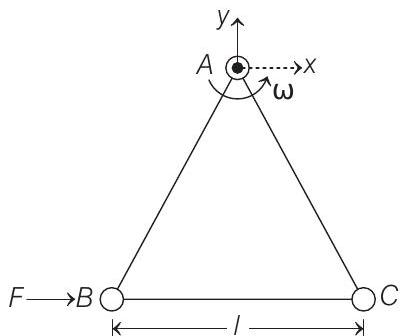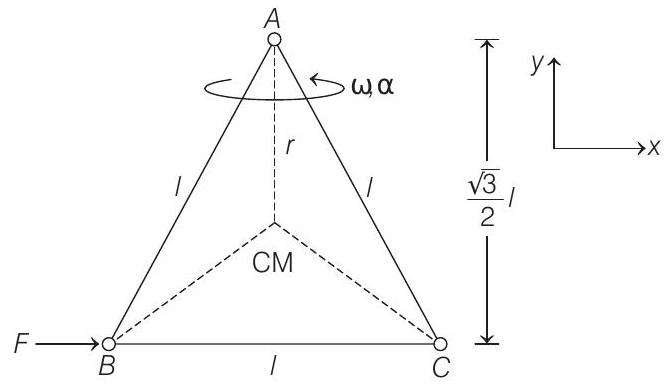Rotation 5 Question 24
36. Three particles
 it at the point
it at the point
(2002, 5M)
(a) Find the magnitude of the horizontal force exerted by the hinge on the body.
(b) At time
Show Answer
Answer:
Correct Answer: 36. (a)
(b)
Solution:
- (a) The distance of centre of mass (CM) of the system about point
Therefore, the magnitude of horizontal force exerted by the hinge on the body is

(b) Angular acceleration of system about point
Now, acceleration of CM along
Let
Further if






